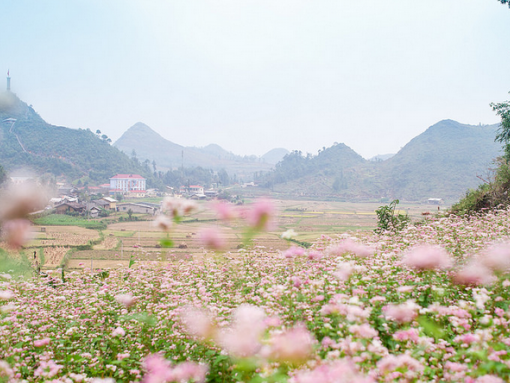 |
The first buckwheat festival is organized at the provincial level – a festival of culture and tourism on the Dong Van Stone Plateau.
Addressing the opening ceremony, Vice Chairman of the provincial People’s Committee Tran Duc Quy said the festival aims to build a brand name for local tourism, fully tap the tourism potential of the plateau and Dong Van’s old quarter, and promote the locality’s cultural values.
Themed "The karst plateau – thousand blooming flowers", the event featured excellent art performances reappearing the legend of the buckwheat flower.
The festival attracted the participation of professional artists from ethnic minority groups including Dao, Mong, Tay, Nung, Lo Lo, PuPeo, and Bo Y.
Through the iconic flower, Ha Giang expects to promote its land and people to domestic and international friends, he stressed. An art performance called "The Karst Plateau – A Thousand Blooming Flowers" that took place following the opening ceremony highlighted the stone plateau, Dong Van ancient quarter and the buckwheat flower.
There will be exhibitions, a wine festival, a Mong pan-pipe festival and a handful of contests related to the flower during the four-day event.
 |
 |
 |
Spreading over the four mountainous districts of Quan Ba, Yen Minh, Meo Vac and Dong Van in the north of Ha Giang, the Dong Van Stone Plateau is blessed with beautiful nature and cultural diversity from ethnic minority groups.
The plateau was recognised as a member of the Global Network of National Geoparks in 2010, becoming Vietnam’s first geological park and the second in Southeast Asia.













COMMENTS